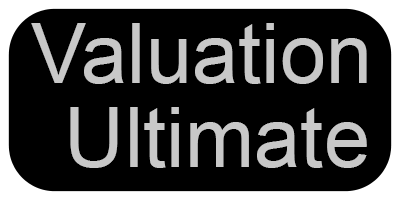
What level of profit or cash flow should you use to value a business?
Listen to our podcast on this topic here: https://www.valuationultimate.com/2-ebit-ebitda-or-cash-flow-for-business-valuations/
This is one issue that business valuers, accountants, CFO’s, brokers and everyone else seems to struggle with. The short answer is it depends on the method you are using (income vs market) and the nature of the multiple itself. Not all multiples are created equally, and you need to know what the numerator and the denominator in your multiple actually represents.
If you are using an income method (capitalisation of future maintainable earnings (CFME) or discounted cash flows (DCF)) you are considering the return on investment based on the business cash flows. So something close to cash flow should be the goal. Earnings before interest, taxes, depreciation and amortisation (EBITDA) is not a great proxy for cash flow because it ignores asset purchases and working capital requirements, which are real and affect how much dividends, interest and loan repayments can be made by the business.
Remember that a CFME method is really a short-form DCF method and the DCF method uses Operating Cash Flow After Capital (pre-interest, post-tax). It follows then that the CFME method should be using something similar. You can use operating cash flow if you have enough reliable data or maybe EBIT or EBITA if you are willing to make adjustments for material cash flow items like ongoing capital asset purchases. EBITDA shouldn’t be used unless the business has no ongoing capital requirements.
Pratt, Valuing a Business 5th Edition: “As with the discounted economic income method, most valuation professionals today prefer to use net cash flow whether valuing equity or invested capital…We believe that capitalization of other income variables (e.g., gross revenue; owner’s discretionary earnings; gross cash flow; and earnings before interest, taxes, depreciation and amortisation (EBITDA) are better handled within the scope of the market approach. That is because capitalization rates for those economic income variables are better developed by direct observations of transactions in the market than by modifications to a build-up or CAPM present value discount rate.”
Mercer, Business Valuation An Integrated Theory 3rd Edition: “EBITDA does not, however, measure enterprise cash flow. Indeed, this is the thrust of critics’ complaints. Operating businesses do require ongoing capital expenditures to maintain productivity capacity and grow. Likewise, incremental investments in working capital to support growth do consume cash. Not every dollar of EBITDA is equal.”
If you want to see the CFME and DCF methods in action check out the sample business valuation report.
But if you are using a market method on the other hand (comparable transaction, guideline public company or rule of thumb) then you have to match the numerator and denominator of the comparable source data. For example, if you have data of say goodwill vs EBITDA for a range of business sales then for the derived multiples the goodwill is the numerator and EBITDA is the denominator. To use this method it needs to be applied apples and apples so you need to apply the subject company’s EBITDA against the multiple to get the numerator (goodwill) as the result. You can’t use anything other than EBITDA if that’s the denominator in the data and you can’t even normalise your EBITDA if the comparable data wasn’t normalised.
By the way, if you are using a market approach you don’t even have to use a financial metric. You might have data where the numerator is enterprise value and the denominator is monthly active users for a web-based business or kilos of coffee beans purchased for a coffee shop. It’s just a metric with a numerator and a denominator and it has nothing whatsoever to do with return on investment like an income method does. As along as you apply the same kind of denominator you will get the same kind of numerator.
In summary, you need to understand the method you are applying and use your judgement in line with the purpose and context of that method. Don’t use a market-derived multiple in a CFME method because you’ve just made a hybrid method that doesn’t actually exist. But there is no reason why you shouldn’t value the business using more than one method to compare the outcomes. If you are doing a valuation with comparable transactions there is no reason why you shouldn’t also apply a CFME or DCF method to compare the results and then adopt one method or a weighted average across multiple methods.
In the Valuation Ultimate software you have full control over the components of each of the valuation methods. If using a CFME method you can choose any level of profit or cash flow and make any normalisation adjustments you wish. You can develop the multiple using a full weighted average cost of capital approach using the CAPM, use a simple buildup or enter a multiple you’ve already decided on. If using a comparable transaction method you can enter business sale transactions with different metrics, choose median, mean or harmonic mean and apply subject company adjustments as you wish. As the valuer you apply your professional judgement at every step. The software is a safe and efficient workspace for you to do your best work.
Want to go deep into valuation theory and hear personal stories from valuation experts, listen to our business valuation podcast.
